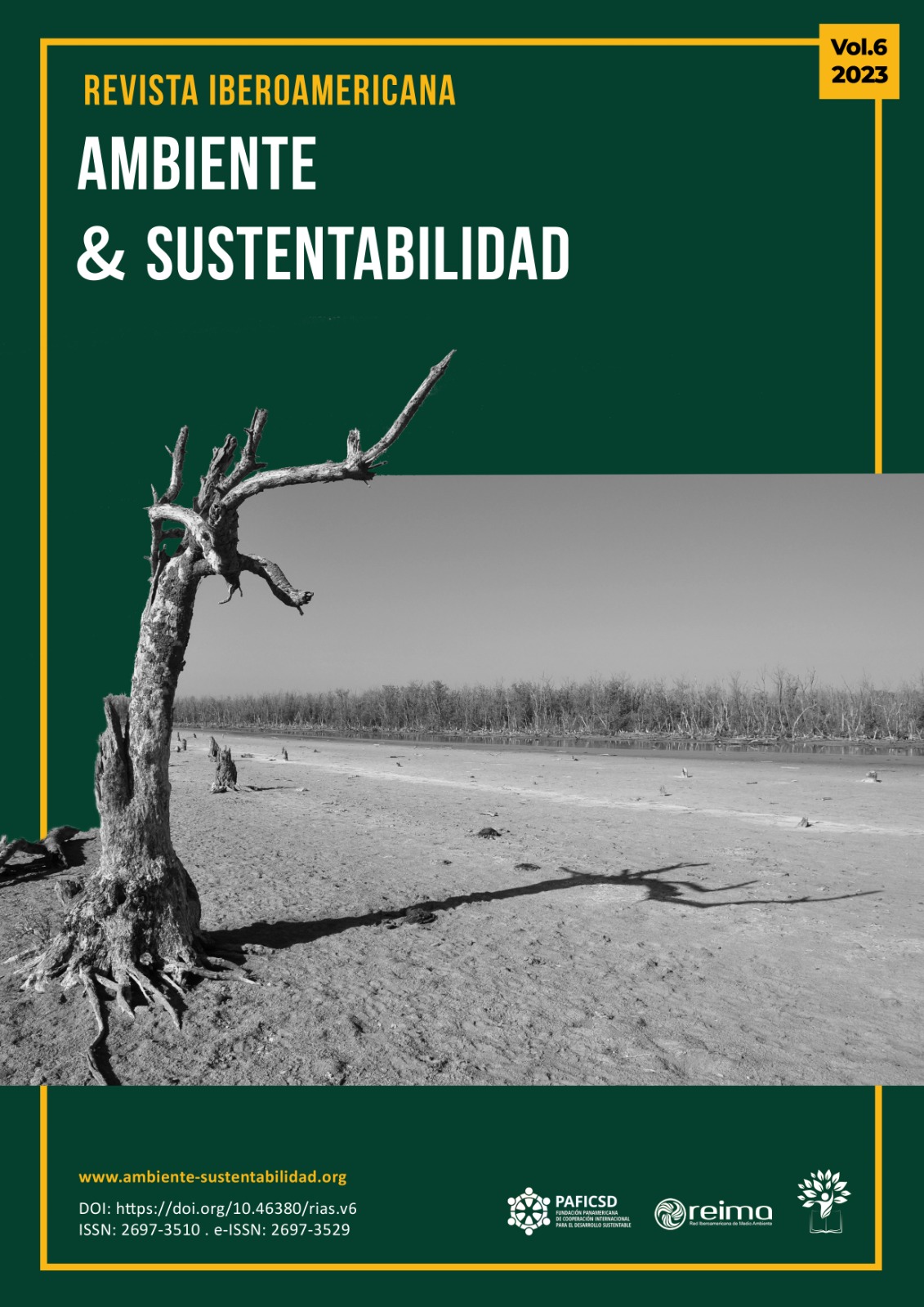A Praça dos Heróis da Independência em Porto Príncipe, Haiti, rumo à sua banalização
DOI:
https://doi.org/10.46380/rias.vol6.e234Palavras-chave:
colónia, fragmentação, negro cimarron, património, planeamento urbano, serviço do ecossistemaResumo
A Plaza de los Héroes de la Independencia, também chamada de Plaza del Campo de Marte, herdeira da Sabana del Rey desde 1749, foi objeto de vários projetos de reforma. Ao longo dos anos, as autoridades integraram outras questões fora do motivo central desta praça pública; de modo que o fervor patriótico que ele uma vez incorporou foi diluído. O objetivo da pesquisa consistiu em fazer uma análise da evolução da Praça ao longo da sua história e que futuro a espera, com base nas diferentes intervenções realizadas pelas sucessivas autoridades políticas, contrastando com a abordagem aplicada em cidades de todo o mundo. do mundo, que criam espaços verdes para melhorar a qualidade de vida de seus habitantes. As fontes de informação foram artigos científicos, documentos, Boletim do Instituto de Salvaguarda do Património Nacional, mapas da praça, entrevistas e, por fim, visitas de campo. A análise da evolução da praça revelou a escassa importância atribuída aos espaços públicos em termos de serviços ecossistémicos prestados. A fragmentação do parque em uma série de unidades causa a perda de seu simbolismo, sua própria identidade e, em última instância, sua banalização.
Downloads
Metrics
Referências
Arango, S. y López, A. P. (2021). Diseño Urbano Participativo del Espacio Público. Una herramienta de apropiación social. Bitácora Urbano Territorial, 31(3), 13-26. https://doi.org/gn4hs7
Clergeau, P. (2020). Urbanisme et biodiversité. Vers un paysage vivant structurant le projet urbain. Éditions Apogée.
Corvington, G. (2007). Port-au-Prince au cours des ans (Tome III). Les Éditions CIDIHCA.
Devauges, R. (1954). Une capitale antillaise : Port-au-Prince (Haïti). Les cahiers d’Outre-Mer, 7(26), 105-136. https://doi.org/10.3406/caoum.1954.1901
Dorsainville, H. (28 de mayo de 2020). Carrefour : un demi-million d’habitants et « zéro » place publique. AyiboPost. https://bit.ly/3kCoByj
Escolano, S. (2017). Los espacios urbanos: procesos y organización territorial. Universidad de Zaragoza. https://zaguan.unizar.es/record/72767
Fathi-Gaoua, L. y Abbas, L. (2020). Le paysage urbain au profit de l’attractivité touristique des villes. Revue Internationale de Management, Entrepreneuriat et Communication, 3. https://bit.ly/3meK7K0
Fondasyon Konesans Ak Libète. (27 de octubre de 2020). BMC Propose : Petite histoire du Champ de Mars. https://bit.ly/3IBE2yH
Instituto de Salvaguardia del Patrimonio Nacional Haitiano. (2018). J. J. Dessalines, H. Christophe et F. Cappoix : trois Généraux, trois Héros et Pères de la nation haïtienne décédés violemment au cours d'un mois d'octobre. Bulletin de L´ISPAN, (38). https://bit.ly/3Z6VxOx
Kabanyegeye, H., Mascharabou, T., Useni, Y. y Bogaert, J. (2020). Perception sur les espaces verts et leurs services écosystémiques par les acteurs locaux de la ville de Bujumbura (République du Burundi). Tropicultura, 38(3-4), 2295-8010. https://doi.org/jx76
Mezié, N. (2019). Être Haïtien en Haïti : protestation et appartenance dans les débats sur le Champ de Mars à Port-au-Prince. L’Espace Politique, 38(2). https://doi.org/10.4000/espacepolitique.6952
Milian, J. y Tamru, B. (2018). Port-au-Prince, ville du risque?? Un mythe au prisme d’une urbanisation vulnérable. Études Caraïbéenne, (39-40). https://doi.org/jx75
Théodat, J. M. (2013). Port-au-Prince en sept lieues. Outre-Terre, 35-36, 123-150. https://doi.org/10.3917/oute.035.0123
Publicado
Como Citar
Edição
Seção
Licença
Copyright (c) 2023 Jean Piou, Gonzalo de la Fuente de Val

Este trabalho está licenciado sob uma licença Creative Commons Attribution-NonCommercial-ShareAlike 4.0 International License.
Este trabalho está licenciado sob uma Licença Creative Commons Atribuição-NãoComercial-Compartilhamento pela mesma licença 4.0 Internacional (CC BY-NC-SA 4.0)
Esta licença permite que os usuários distribuam, remixem, adaptem e criem a partir do material em qualquer meio ou formato, desde que seja atribuída a autoria ao criador.














